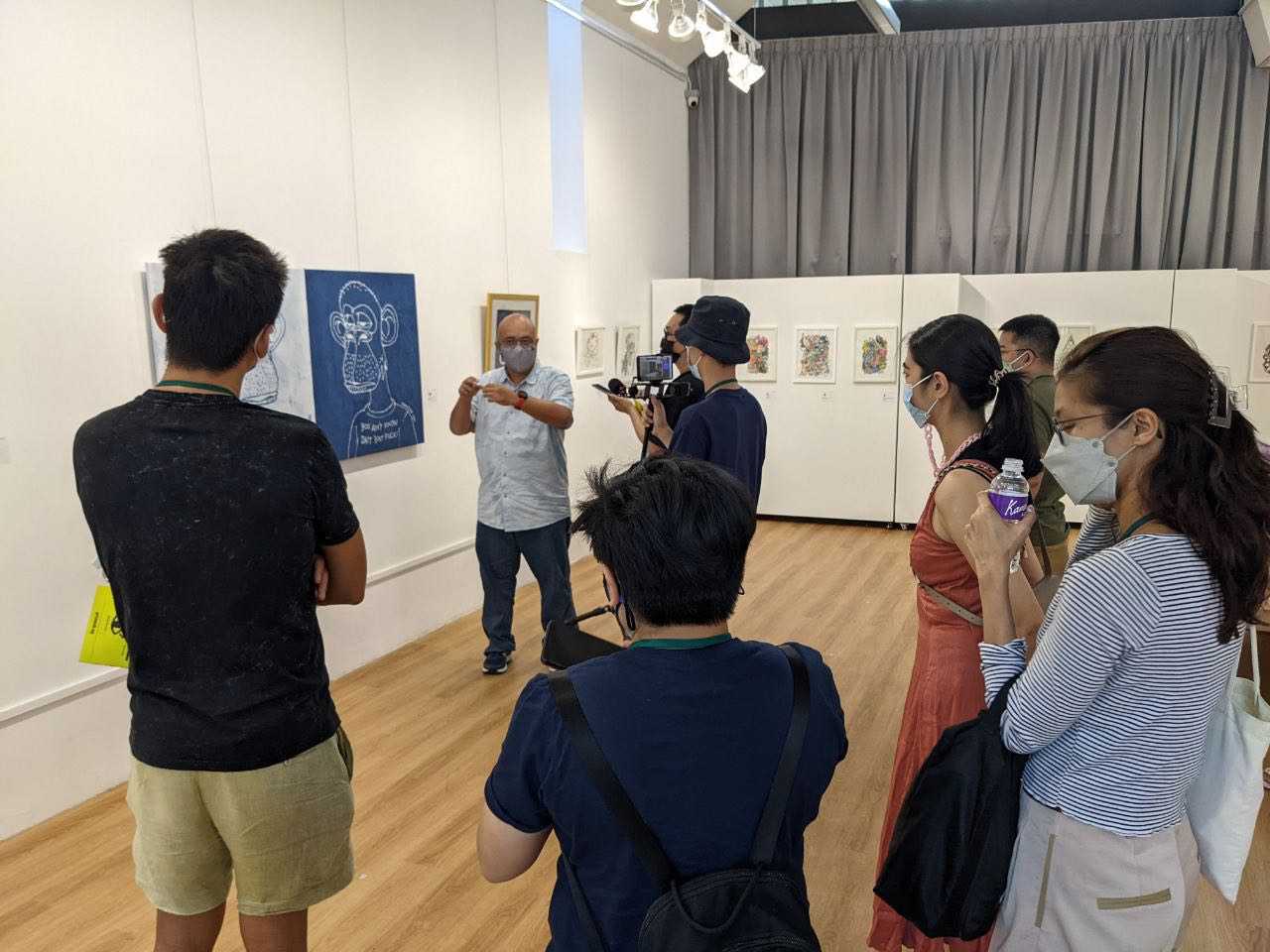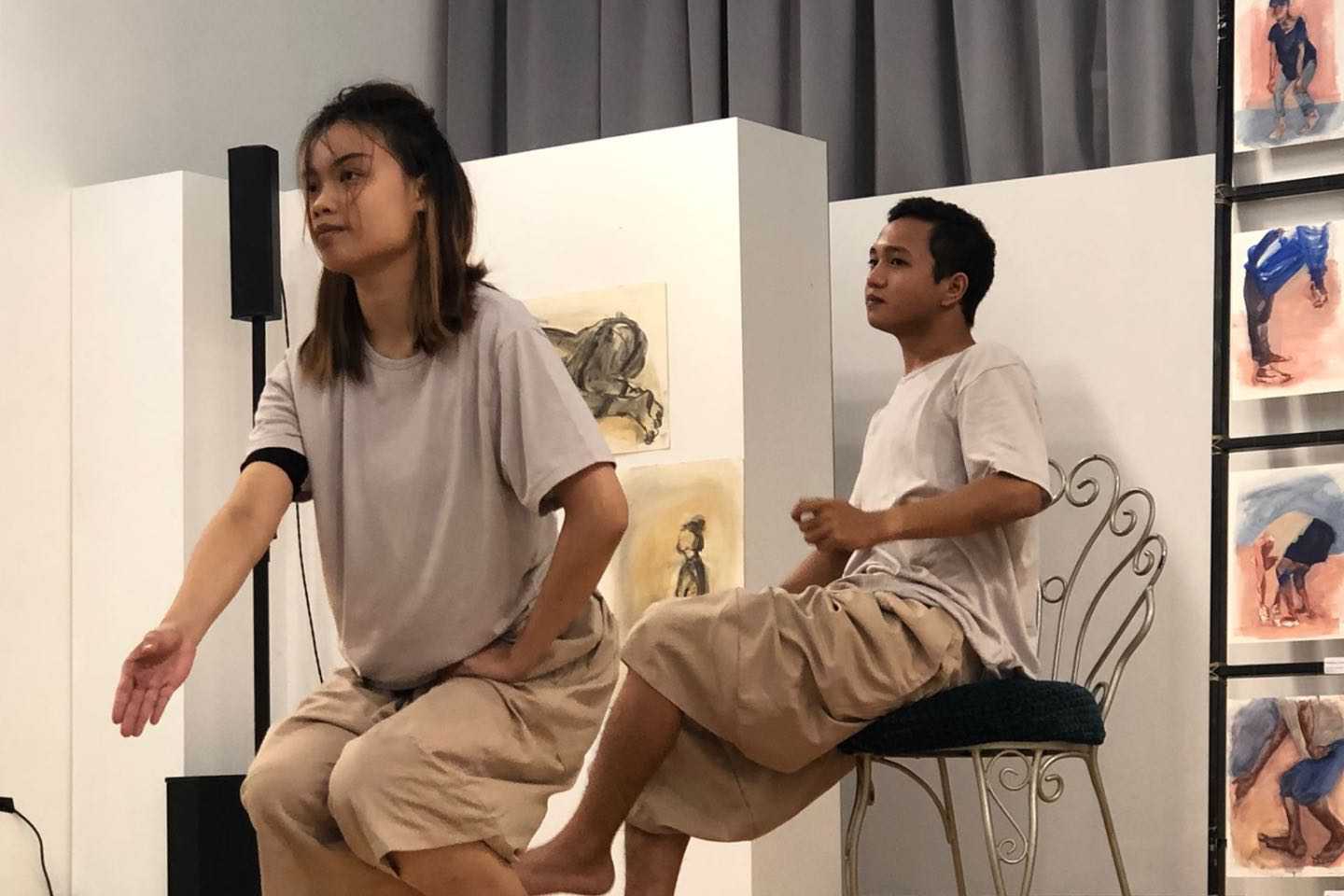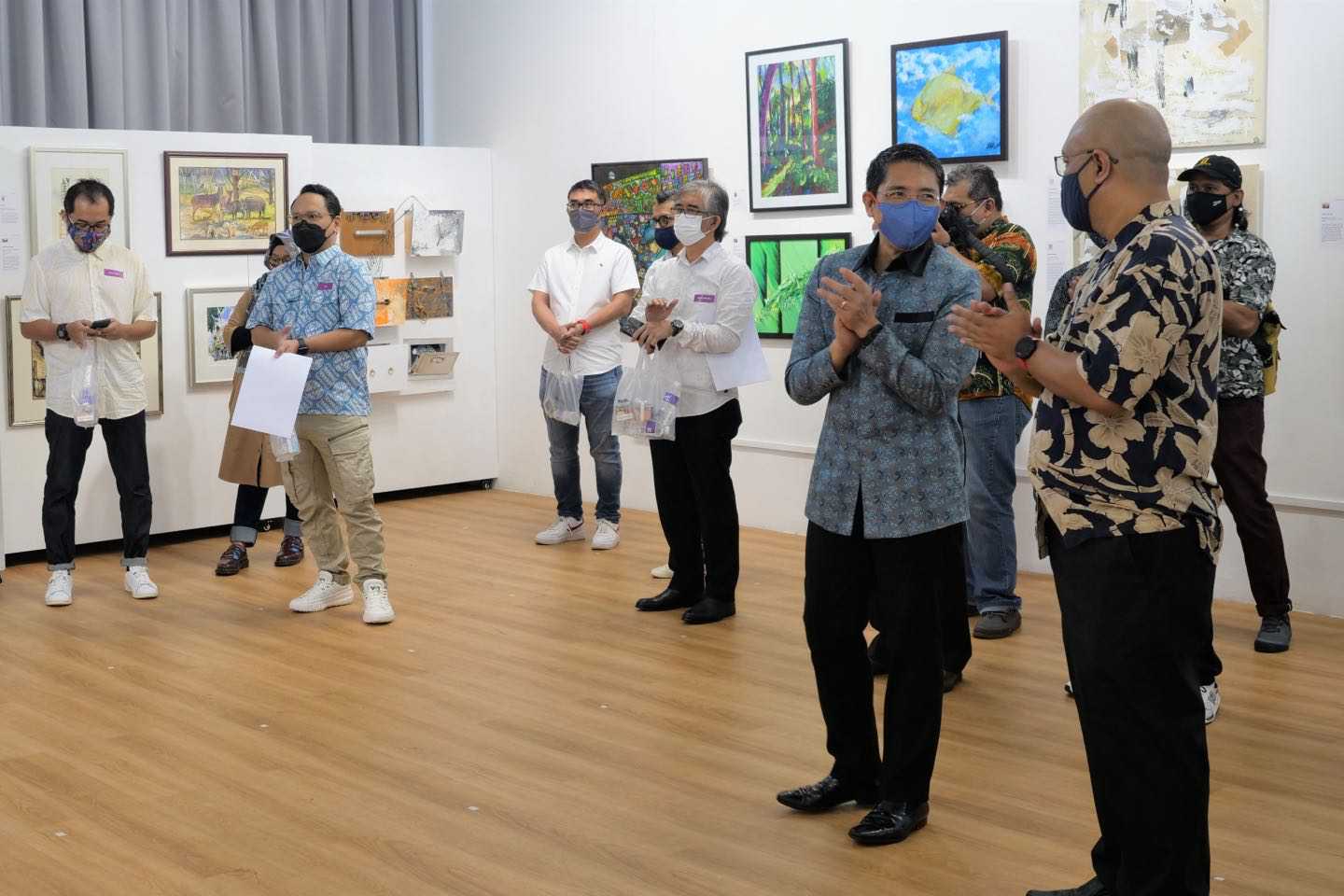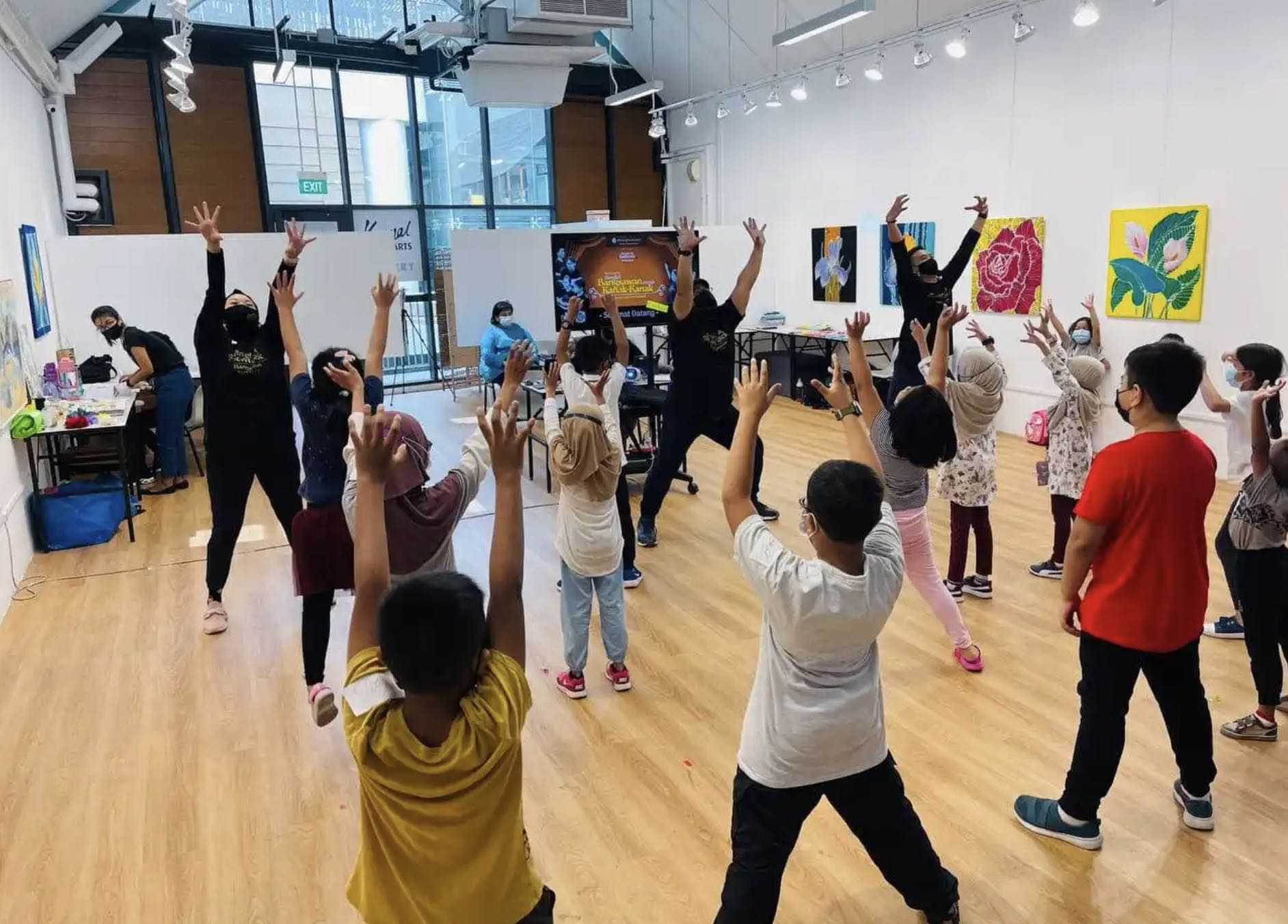Government officials will NEVER ask you to transfer money or disclose bank log-in details over a phone call. Call the 24/7 ScamShield Helpline at 1799 or visit scamshield.gov.sg if you are unsure if something is a scam.

Organisation Transformation Grant Case Study
Kamal Arts - Shared Arts Space
Download the full case study below:
Project Overview
Kamal Arts developed a new revenue stream by maximising a core asset - its beautiful gallery space. It converted a visual arts gallery to a whitespace venue that can support other arts genres, in particular performing arts. It also aspired to provide individual artists and small groups with support services such as grant administration, marketing, technical support, front-of-house management - in short, a turnkey solution for arts presentation.
http://www.kamal.sg/category/collaboration

Challenge
As with so many arts organisations, Kamal Arts operated a visual arts gallery that was badly affected by COVID-19 when tourism and events came to a standstill. It needed a new revenue stream – fast – to sustain itself.
The Vision
Through feedback, Kamal Arts learnt that the community needed a community space that served multiple artforms, that made it easy for people to seed new forms of collaborations by intersecting visual and performing arts genres. Their vision hence is to create a unique value proposition - a mixed genre venue targeted at small arts groups or individual artists, for an intimate audience size of up to 100 persons.

Outcomes in a Nutshell
Transformed the space and upgraded existing premises with modular exhibition panels, mirrors, sound system, staging platform, and curtains
Improved back-end processes with the help from an arts administrator and accounts executive hired specifically for the grant period
Organised 24 activities with 19 artists or arts groups
1,500 audiences attended events
Impact
The Proof-of-Concept of a mixed genre arts space worked so well that Kamal Arts had a happy problem of having too much demand. Due to the transformation, what was previously perceived as a pure visual arts space is now recognised as a community space for small art practices of various genres. New artworks and arts events emerged, inspired by the intersection of genres - children created dance movements that mirrored the paintings in the gallery; a dance company recorded their dance as a visual display. As more performing arts groups utilised the space and publicised their projects, more people became aware how this space could be used to explore, process and present their art in new ways.
Through working on the transformation project, Kamal Arts was able to create a breakthrough from their old business model to offer new services, a space for new collaborations and different arts genres, and most importantly expand their revenue streams. The process was challenging, but it worked well through consultation with stakeholders, refining processes along the way, and building trust with the community that they served.
3-2-1 Learnings
“We must learn to build trust, and to trust people.”
3 Must-Dos
Things you must absolutely get right
- Get the infrastructure right. Partner Saiful Amri brought his producer’s experience to bear in the first round of venue upgrades, and users’ feedback surfaced other areas of improvement such as sound-proofing and lighting.
- Establish clear rules of engagement. “We had to make cohabitation work - art exhibits in the day time, rehearsals and programmes at night.”
- Clean up your back-end. Have an arts management process in place, get accounting help to consolidate spending and transactions for grant management and reporting.
2 Do-Next
Critical next steps to sustain the effort
- Increase marketing and engagement efforts. Continue to build relationships with the groups that have already used the space, share case studies, and establish new ones through word-of-mouth.
- Develop a financial forecast and an operating model, budget costs, and set targets for this new revenue stream.
1 Do-Differently
What they wished they had done differently from the start
- With hiring being a challenge for small arts groups, they could have casted the net wider to build a pool of freelancers for ad-hoc assignments in addition to permanent in-house hires.
Challenge
As with so many arts organisations, Kamal Arts operated a visual arts gallery that was badly affected by COVID-19. Other than selling paintings, it depended on tourism, corporate and community group events that came to a halt during the pandemic. “We were sitting on a property, just bleeding rent,” recounted founder Kamah Dollah.
The Vision
But while short-term survival spurred Kamal Arts to do something, ultimately what excited founder Kamal Dollah and partner Saiful Amri was a larger vision of opening up a core asset - a beautiful gallery space - to the wider arts community, make it easy for people to create art, and seed new forms of art by intersecting visual and performing arts genres.
“We have a really fantastic space - it’s centrally located in Geylang Serai, close to public transport, restaurants and services. It has a high vaulted ceiling, natural daylight, and a rooftop garden. It is completely under-valued if we don’t make it accessible to more people,” recounted Kamal of their thought process.
Through feedback and market research, Kamal Arts eventually learnt that their unique value proposition would be to come up with a mixed genre venue to meet the needs of small arts groups or individual artists for an intimate audience size of up to 100 persons. “Most of the other venues for rental are made for far bigger audiences of 200 persons and above,” they realised.
The Journey
Discovery. Learning-by-Doing. Overcoming Challenges.

Product
First matter of priority was infrastructure upgrades. Kamal Arts used the grant to upgrade existing premises with modular exhibition panels, mirrors, sound system, staging platform, and curtains. All of this was done during COVID-19, and they faced challenges with disrupted supply chains and lack of manpower.
Initial publicity to get the word out was a challenge. “Fortunately NAC held a Let’s Connect! networking session where we shared about the project and it generated a lot of interest,” said Kamal. Malay newspaper Berita Harian also gave them a full-page feature.
Then there were safe-distancing measures. “We had a tough time getting artists to take on the offer initially as they are concerned about audience management,” said Kamal. To this end, Kamal Arts familiarised themselves with the guidelines in government circulars, and communicated these clearly to artists which helped to reassure them.
Once people visited the space, “[the] stakeholder buy-in was easy.” The proof-of-concept was tested with 19 stakeholders from different art genres, across 24 activities that involved an audience size of 1,500 in total. There were positive media reports of some of the performances.
Quickly, Kamal Arts ran into the unexpected challenge of having to turn away requests because of high demand. “With more groups using the space, it was a challenge to ensure that schedules did not clash and we did not double book the gallery.”
Today, Kamal Arts is working to incorporate artists’ feedback into future upgrades, such as sound-proofing, options for warm and cold lighting, and an optional cleaning service to ensure the floor is thoroughly clean for dancers or performers who need to be barefooted.
Process
To make the space work, rules of engagement had to be clearly spelt out. “We had to make cohabitation of the space work - art exhibits in the day time, rehearsals and programmes at night.” For example, dancers and performers had to be very careful not to touch the artwork hanging on the walls and panels. “Everyone has been very responsible and we’ve had no issues so far.”
Kamal and Saiful set out to make the sign-on process as simple and friendly as possible. They studied the sign-up and onboarding processes of other venues and consulted artist friends. The end design is straightforward and in layman language; everything is done electronically with 3 steps - an online form, a contract and an invoice.
An initial assumption when Kamal Arts started out on the transformation project was that arts groups and artists needed help with grant administration in order to start their projects, but their experience was that most artists came with grants already secured.
People
Kamal Arts hired an arts manager on a short-term contract whose duties included communicating with artists and groups, scheduling bookings, writing web and social media postings, and formulating a system for gallery hire requests and user agreements. “This gave us a taste of what is possible with the increase in manpower resources,” said Kamal. An accounts executive was also hired to tidy up the accounts.
Hiring proved to be challenging. Of their experience, Kamal Arts said, “We assumed it had to be a full-time in-house person. We realised now perhaps it’s better to get a freelancer, but with the right heart and passion for the job”. Manpower costs still remain a challenge for many arts groups today.
System
“Clean up your back-end”, advised Kamal. One of the most valuable aspects of their transformation journey was the unseen part - getting the back-end systems and processes in place. Kamal Arts used this grant to establish an arts management process, and get accounting support to consolidate spending and transactions for grant management and reporting.
Reflections
Founder Kamal Dollah recounted: “Visual artists tend to work mostly alone. I realised that in contrast, performance artists are used to working in groups.
Kamal also hinted that he had to overcome a certain reputation of being a lone wolf in the artistic community: “My challenge was that people saw me as doing things alone. It was quite a gamble for people to trust me when we opened up the space. Many asked “Are you sure this is happening?” But in the end, people started to trust me and more are coming forward to collaborate with us in the space now. I realised [the gallery] is not about one person - it’s about resource-sharing and the community.”
This project has been supported by NAC's Organisation Transformation Grant. For more information and resources on NAC's grant schemes, please visit: https://www.nac.gov.sg/



